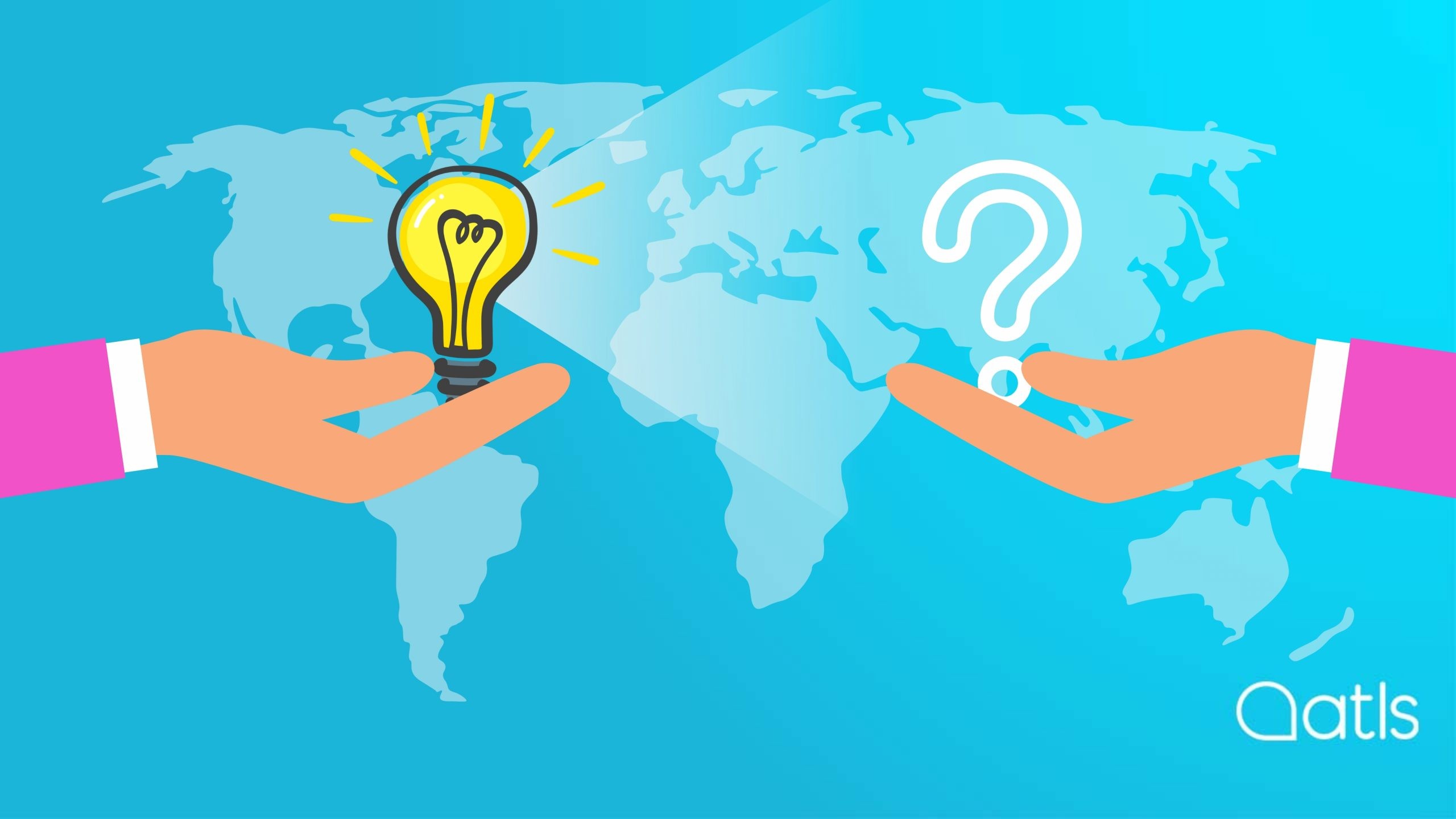Complete guide to video game localization

Keywords: video game localization; video game localizer, how to translate a video game, video game translation programs, video game translation.
Rescue the game? How can I rescue it? Ah, OK. I see, it means 'save'. Is it understandable? Yes. Is it the right translation, and one that gives you a natural and fluid gaming experience? Nope, not at all. And that's just the tip of the iceberg in video game localization. Unfortunately for gamers, games designers and marketing companies, this is a much lesser known side of translation.
Somewhere between translation, marketing, technical development and intercultural mediation, the aim of video game localization is to make sure players - wherever they are in the world - can understand the game, feel as though they're represented, and enjoy an altogether more natural, fluid, satisfactory experience that's entertaining to boot. So, how do you do it? Once you've read our brief yet comprehensive guide, you'll see that video game localization is a technique and almost an art in itself. It's a field that requires experience and meticulousness, talent and sensitivity; and it's an absolute must if you want to open up your product to the international video games market
Everything you need to know about video game localization:
- What is video game localisation?
- Differences between video game translation and localization
- How to translate a video game
- Types of localization to think about in a video game
- Which parts of a video game need localizing?
- Video game localization tools
- Automating video game localization
- Localization quality testing
- Best practices in video game localization
- Find your video game localizer
What is video game localisation?
Let's start from the top, with a definition of what video game localization means. In a nutshell, localization involves the cultural adaptation of a product or service for a market other than the home market,in which both the language and cultural references are different.
This broad definition could be applied to any product or service, encompassing diverse aspects from the product name to the turns of phrase used in a variant of the source language, via various technical issues. Let's dig a little deeper
The importance of video game localization
Borders are becoming more and more porous in the current economic and social context. The aim is for our product or service to reach every inch of the planet, regardless of the region or the language spoken. So, why would video games be any different? In this sense, localization and globalization go very much hand-in-hand.
But that doesn't mean that the whole planet - or the people on it - are one homogeneous mass. There is still (thankfully) a wealth of cultural and language diversity, which in effect creates two barriers: it isn't just the words that change, but the meanings behind the words, which is why mere translation just isn't enough.
Video game localization trends in 2023
As video games become more complex (we're talking about the story timelines, descriptions, menus and tutorials) players' experiences are getting all the richer... But that complexity needs to be conveyed! If one thing could define current video game trends, it's the sheer sophistication of the gaming experience.
Also looming large on video games horizon is internationalization, the vast flow of video games cropping up all over the place and 'travelling' from one market to another. Against this competitive backdrop, it might be tempting to find a video game translation program. But if you're not careful, this 'shortcut' could take you directly to a dead end - if the localization isn't done well.
More specifically, challenges today focus on two-way translation, inclusive language and functional diversity, but we can also see more of a focus on designing video games for different markets from the get-go; Is transcreation the future?
Differences between video game translation and localization
Confusion is as common as nuance is important. A video game is an audiovisual and interactive computer program, but it's also a commercial product that needs to appeal to potential customers. The major difference lies in the challenges professionals come up against when translating video games. Let's take a look at some examples IRL.
We can all agree that video game localization is particularly complex, and all the more so when it comes to:
- Language and culture
- Regional settings (local)
- Technical requirements (hardware and software)
- Legal considerations
- Graphic identity
Or, looking at it another way, you need to tackle various challenges:
- Language challenges. Conveying the meaning in one language in another is a translator's everyday work, but in video game localization, practically speaking, it tends to be done during the game development phase. It can lead to a serious lack of context of the sort you wouldn't find in a more 'closed' text (especially because the scripts aren't even linear in lots of video games): there will be different answers to a question, but what was the question?).
- Cultural challenges. In order to localize icons, you need to understand the target culture (do you understand all emojis?), intertextualities (what would 'somewhere in La Mancha' mean to a Chinese audience?) and visual metaphors (is a wizard the guy with a pointy hat or something that helps with a technical issue?). Cultural diversity could well affect the plot if some things (such as cooking pork), characters (a minor) or elements (a song) are problematic in another cultural context. We'll take a look at some examples in this article.
- Technical challenges. Not only do you have a diverse range of materials (narratives, audio and text dialogues, menus, databases, manuals, copywriting, etc.)... Other elements (like graphics, programming tags, code fragments, etc.) need to be familiar to the user, or they could land in trouble.
How to translate a video game
When translating video games, the process is often seen as a series of consecutive steps (exporting texts, translation, review and QA), which can often create a number of issues. There could be snippets referring to unknown images or text, for example.
So, rather than tell you how video games are translated in general, we're going to dive in and tell you how to translate a video game and get the best final product (which is how we aim to do it, when it's left up to us):
- Choosing your target markets. Some games just aren't viable in certain markets; there's just no point trying. Other games might need fundamental changes implementing, and it's best to know that from the outset.
- Strategic localization plan. Once you've analysed the viability of a video game and confirmed it's right for your chosen market, the main changes, tasks and issues are evaluated (along with costs and timescales).
- Collecting and categorizing materials. If you give your video game localizer a neat bundle of files in the right format, the quality of your final product will skyrocket, lead times will shorten, and costs will go down. Bonus.
- Extreme coordination. Several translators (and other professionals) tend to be involved in the localization process, which means terminology, style, and technical and artistic issues, etc. need to be aligned.
- Review (yes, now). And testing. Then more testing and a little more testing - especially for non-linear games; this is something of a golden rule when it comes to ensuring the translated video game is truly immersive for the user.
Types of localization to think about in a video game
If we put the purely technical aspects of localization (the tech stuff) to one side, (and assuming your video game localizer is communicating with the team closely and fluently to iron out any issues), we can now focus on the two fundamental aspects of localization: language and cultural.
Linguistic localization
If you've got a Russian character in a game, and they stand on the sidewalk to hail a taxi to the Kremlin, rather than the pavement, it'd sound a bit strange to you, right? It could be that the translator (who may well have done a good job) decided on a word tailored to the American market.
Register and accents are another major pitfall. Think about the following: in a US context, a Mexican character speaking in Spanish would be intended to be incomprehensible, but not for the Spanish market! How could you adapt it to the Spanish market? Or Mexican? Or is it better to just not change anything?
In linguistic terms, the issue of context in video game translation is clear to see in isolated elements. There could be, for example, a list of options (but the translator is looking at a long list of words in Excel, without any other references). Is the word 'save' referring to a file, or a rescue mission? Is 'work' a verb or noun form? Go!Does it mean 'start', or 'get out!'?
Cultural localization
You might be confused if an American college student tells you they're in ninth grade, but if you need to spend some dollars and travel a few miles, you'll understand it, no problem. As you can see, it isn't just a case of the translator being aware of the source and target cultures, but it's also about them knowing what they can simply leave 'unlocalized'.
On the other hand, if a Swedish gamer is playing a graphic adventure game set in Spain and sees a group of people dressed in white with red neck scarves, it's best they don't see this as a clue to discovering which city the evil is hidden in, or things are going to get complicated... and for the games designer to solve, even more so!
The most problematic aspects of cultural localization tend to be related to violence, gender and vulgar language (knowing what's considered acceptable or excessive in each culture), or even contradictory cultural perspectives of historical events (very evident in strategy and war games set in the Second World War, for example).
Which parts of a video game need localizing?
Text strings, audio fragments (which need subtitles or dubbing), UI menus, graphics, manuals, visual identity/branding, advertising materials, websites... You could say there isn't one sole localization process for video games, it's a number of localization processes working more or less in parallel.
In fact, if there's one distinctive feature of video game localization, it's the variety of types of localized materials. Let's take a quick look through them all to give you a general overview of the differences and how to tackle them to guarantee a coherent localization process.
Menu and interface screen localization
These materials sound like they would be simple to localize, but not necessarily... We're talking about drop-down menus, tables and windows loaded with information, major space restrictions and little room for redesign when you need to prioritize clarity and functionality. This is where errors can get costly in terms of interaction and playability.
Audiovisual translation
Audiovisual elements abound in gaming: a mockumentary fragment, a phone call voiceover, conversations between characters, etc. You'll need to use subtitling or dubbing techniques (or probably both), taking into account issues like synchronization, register and accent to get your video game localization just right.
Images and graphics
The translator might not notice, but the player will. If you don't get the localization right, a map of the treasure island or a poster on a door relating to the story could easily result in a poor gaming experience. That's before you even get to the graphics, branding, styling, various versions of the logo, packaging and advertising, etc.
Tutorials and help
All the more informative (and sometimes technical), these materials are just as important, and key to players getting a satisfactory gaming experience. It includes everything from the instruction manual to the README.txt file (sorry, LEEME.txt), encompassing the help pop-ups within the game itself, and some of the web content.
Dialogues and narratives
The very essence of several games (especially RPG/role-playing games, but also action and adventure). This is where you need to pay maximum attention to fluency and naturalness: you don't want the text to grate on player at a syntactic, semantic or pragmatic level. So, if they come up against an Italian gangster in 1930s Chicago, he needs to sound like one.
Achievements and challenges
You would be amazed at how different the parameters can be in terms of achievements or descriptions of challenges in different languages and cultures, to the extent that a bad video game localization can ruin a player's immersive experience, or even make a mission completely unplayable. A typical example of 'context is everything'.
Hardware and software
An essential, and often not given the attention it deserves. This requires maximum collaboration with the technical team (developers, engineers, IT). Do they use PAL or NTSC in the target market? Are keyboard shortcuts the same in Germany and Singapore? Have you thought about whether it's a web or mobile app, or both?
Video game localization tools
Unfortunately, there is no video game translation program (or at least no specialist software with a graphic user interface) that suits localization, as is the case with other products (websites or software): translators can work with the source code, but they won't see the final result, or vice versa.
So, at this point video game localization is a 'manual' process - just as it is for much of literary translation. However, there is specialist software out there that can be really useful, such as SDL Passolo and Alchemist Catalyst. These programs automate some phases of the process (generally more related to the technical side of the translation).
Of course, you can sometimes and in part use the software tools commonly used in professional translation such as the classic CAT tools: Trados, Phrase or DeepL (all with terminology managers and translation memories) or subtitling programs, among others. Machine translation should be avoided at all costs.
Automating video game localization
As you've now seen, the diversity of text, media and format types makes it practically impossible to completely automate video game localization. Here are some examples to show you what we mean:
- Subtitling involves various elements requiring specific software and expertise (audio duration, number of characters available, synchronization).
- Some closed texts are so critical (the README.txt file, for example) that they need meticulously reviewing by a specialist.
- Copywriting (covering the titles, press releases, social media posts, etc.) needs to be done with a level of creativity machines simply can't manage.
- Materials without context (abbreviations in tables, short response options, names and object features) are veritable traps for CAT tools.
Localization quality testing
Lots of video game fans might think that working as a tester would be their dream job. That's because they've never done it! The QA and LQA process for localized video games is a long, thorough and arduous task. It's confusing, and takes high-level attention, knowledge and experience in both language and technical terms.
As well as providing a conscientious critical analysis and keeping up-to-date with regulations and quality standards, video game quality control is an ongoing task. Updates, patches and other changes are a fact of life with these kinds of products, especially online games.
Best practices in video game localization
In essence, the dream scenario is to work on the localization right from the early development stage, including consultancy on internationalization. But this all depends on how you're working. Do you have a sim-ship (simultaneous shipping) strategy?: this means all localized versions of a game are launched at once. Or post-gold (from gold master), where the game is localized after the original version has been launched).
Whatever the case, the video game localization gold standard is to work with a localization manager who can assess the appropriate level of localization. This person can then serve as a link between the localization engineers (IT technicians) and translators. They'll develop a localization kit (or 'lockit') and other essential tools (style guides, glossaries, etc.), to ensure consistency and keep up the pace of work, etc.
What you always have to keep in mind is that, at the end of the day, playability is key, but you will have time and budget constraints (as always). This is precisely what will determine how far you can go.
Find your video game localizer
And finally, the moment of truth: you need to find the perfect video game localizer for your product, whether it's an AAA MMORPG style game or Martian-blasting mobile app (no Martian adaptation required; we don't need to worry about inappropriate translations for the Martian market, yet). Our top tip? Choose a company with a good track record.
At ATLS, we're the transcreation and localization specialists, integrating our specialist translation perspective with the principles and objectives of international marketing. Thanks to our experience in the sector, we can help you harness the power of video game localization to reach any market. Find out as much as possible, it won't cost you anything!
Get in touch if you are interested in growing your business globally.









